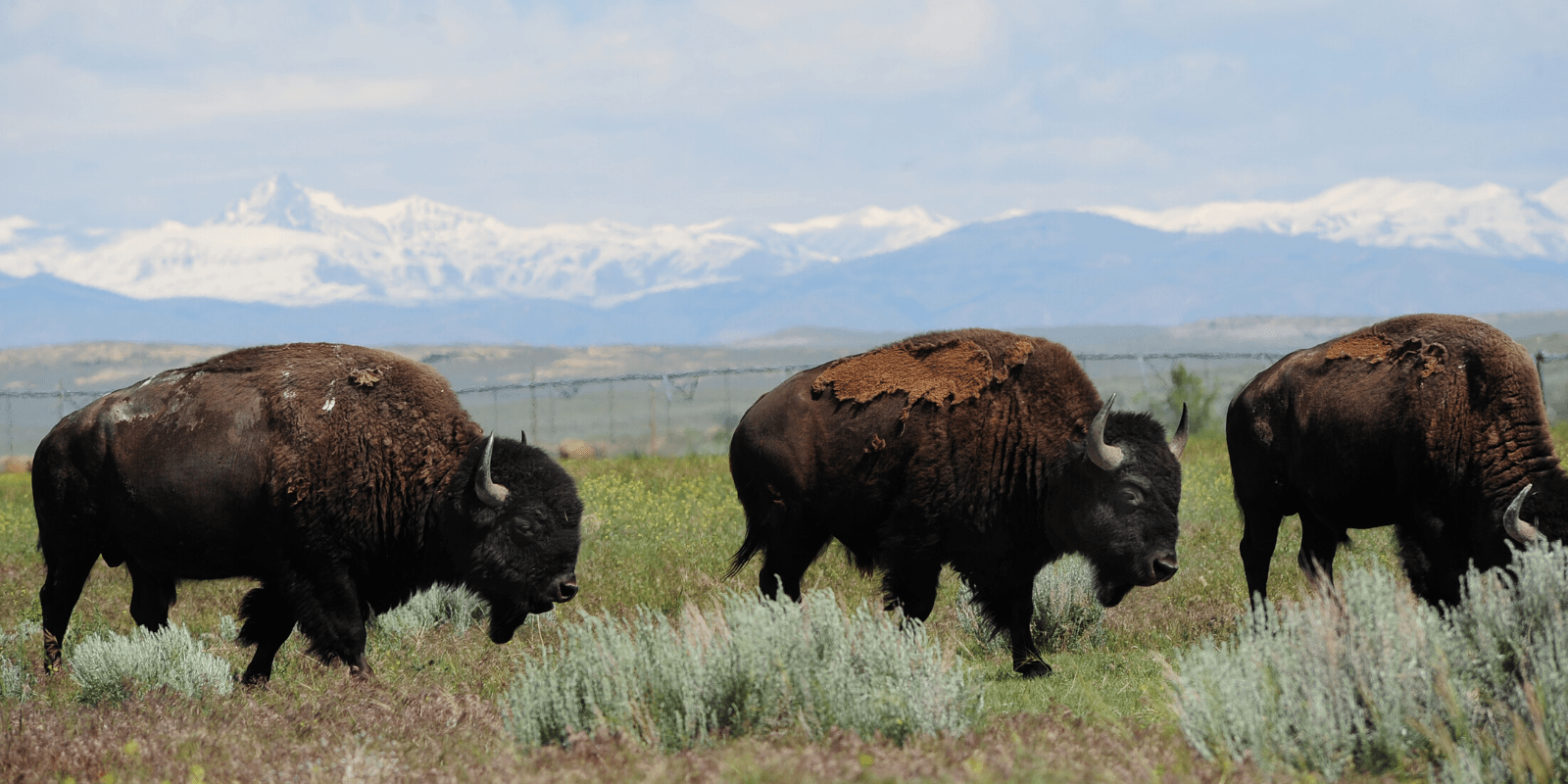August 21, 2022
The history between Native peoples and Buffalo is not a story that everyone knows, but our histories are intricately intertwined. We are similar in that we both are now on remnants of our once vast territories. That history should be understood by all Americans.
The Eastern Shoshone refer to ourselves as ‘Gweechoon Deka’, or Buffalo eaters, and have deep connections to this iconic wildlife species. Buffalo once dominated grassland and prairie ecosystems across the continent. As great herds of Buffalo grazed across the land, they had a myriad of positive ecological impacts to not only the soil, water, and plant life, but to insects and a variety of animals as well, living in synergy to benefit their habitat.
Buffalo were also, and still remain, a vital piece to the well-being of our Tribal communities.
An estimated 30 to 60 million Buffalo once roamed but were killed for their hides and tounges, and in large numbers for sport as the railroads cut through the Great Plains. Even their bones were gathered and ground into fertilizer. After the defeat of General George Armstrong Custer at the Battle of the Little Bighorn, Congress encouraged the elimination of the food source of Natives holding onto vestiges of their territories. By the end of the 19th century, only a few hundred Buffalo remained in the United States.
Bringing Buffalo Back
Over the last 25 years, the National Wildlife Federation’s Tribal Partnership Program has worked with Tribes to bring wild Buffalo back to our lands and cultures. We believed that Yellowstone Buffalo, the last free-roaming wild herd in the United States, offered a way to start new conservation herds rather than see the Buffalo shot or slaughtered when they migrated outside park boundaries. In 1997, a solution was proposed: a pasture facility where Buffalo could be held, deemed healthy, and then made available for restoration to tribal and public lands.
In 2012, after 15 years of hard work and legal battles, tribes, the National Wildlife Federation and bison conservation partners succeeded in working with the state of Montana to transfer 64 Yellowstone Buffalo to the Fort Peck Tribes in Montana. The next fall, 34 of those Yellowstone Buffalo were transferred to the Fort Belknap Tribes in Montana to start their own herd. In another landmark victory in November 2014, we successfully transferred 136 Yellowstone Buffalo to Fort Peck. But this was just the beginning. The Eastern Shoshone Tribe on the Wind River Reservation now maintain 31 Buffalo, and the Northern Arapaho Tribe has recently established a herd of 10 Buffalo.
All of these animals are genetically reputable, and have come from national park and refuge populations that are certified disease-free. Protected under the Tribes’ Game Code, the Buffalo on Wind River will be protected as a wildlife species. Tribal lands are one of the few places Buffalo are treated as a wild species, and not as livestock.
To continue forward progress in Buffalo restoration and conservation, a paradigm shift is needed in how we collectively “see” Buffalo. Most people witness them by traveling to a park, refuge or private ranch where these animals are confined by fences or prescribed boundaries. They do not exist on the landscape in the same way other wildlife species do. We have forgotten how to see Buffalo the same way we see wildlife like pronghorn, moose and other species in their habitat. We won’t be able to treat Buffalo like wildlife until we see them as wildlife.
The Future for Tribes and Buffalo
While we cannot recreate the vast herds that once were, we can bring Buffalo back. Restoring Buffalo to tribal communities is reconnection, a way to heal from past atrocities. The Buffalo’s story is not only a Native story but it’s also an American story. Buffalo have been absent from our lives and we have forgotten how to see them, but this is changing.
In the last six years, the National Wildlife Federation’s Tribal Partnerships Program has helped restore more than 220 Buffalo and fostered herd expansion through the birth of dozens of Buffalo calves. We have helped set aside tens of thousands of acres of habitat for Buffalo, overcome political and legal challenges to Buffalo restoration on tribal lands, and connected youth to the history, ecology, and culture of Buffalo through unique learning experiences.
We are creating a network of tribes and conservation interests that aims to share Buffalo to start new herds or provide strong genetics to augment existing herds. This Buffalo trade network is fundamental to bringing Buffalo back in large numbers to the American West.
This article was originally published on the National Wildlife Federation website on March 19, 2021. It has been edited and reposted here with permission.

